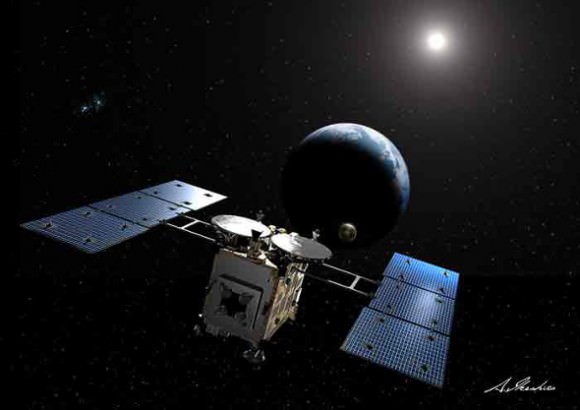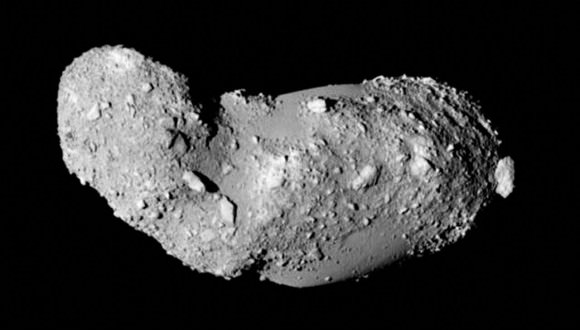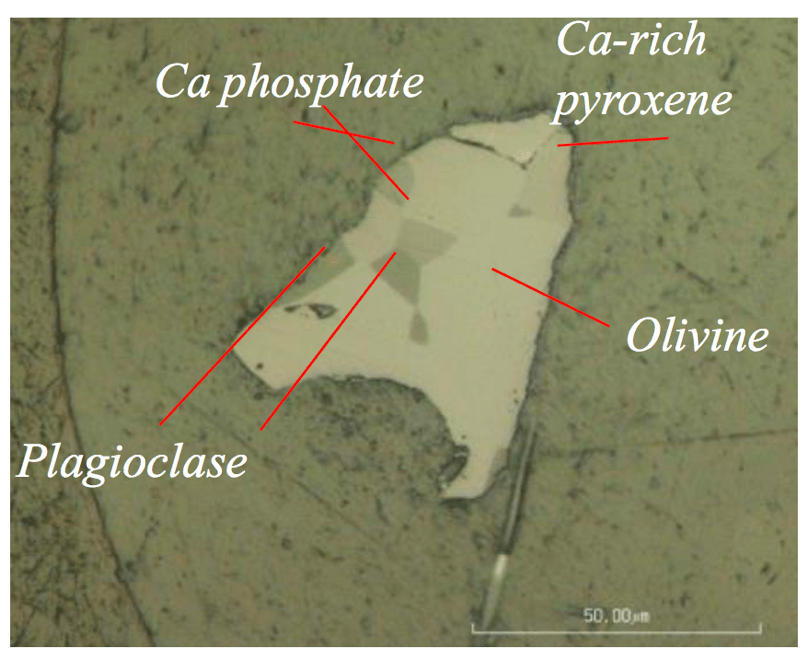Within Earth’s orbit, there are an estimated eighteen-thousands Near-Earth Asteroids (NEAs), objects whose orbit periodically takes them close to Earth. Because these asteroids sometimes make close flybys to Earth – and have collided with Earth in the past – they are naturally seen as a potential hazard. For this reason, scientists are dedicated to tracking NEAs, as well as studying their origin and evolution.
However, when and how NEAs formed and what they experienced during their lifetimes has remained an enduring mystery. Luckily, a team of Japanese researchers recently examined particles collected from the Near-Earth Asteroid Itokawa by the Hayabusa spacecraft. Their analysis indicates that Itokawa came from a larger body that formed about 4.6 billion years ago and was then destroyed by a collision about 1.5 billion years ago.
The study which details their research findings recently appeared in the journal Scientific Reports under the title “Thermal and impact histories of 25143 Itokawa recorded in Hayabusa particles“. The study was led by Kentaro Terada, a professor with the Planetary Science Group at Osaka University, and included members from the Japanese Aerospace Exploration Agency (JAXA), the Atmosphere and Ocean Research Institute, the Japan Synchrotron Radiation Research Institute (JASRI), and multiple universities.

For the sake of their study, the team analyzed a few micrometers of phosphate minerals from the Itokawa particles, which measured about 50 nanometers in diameter. These samples were collected in November of 2005, shortly after Hayabusa rendezvoused with Itokawa and landed on the binary asteroid’s surface. These samples were then returned to Earth on June 13th, 2010.
The team then subjected these phosphates to precise analysis using Secondary Ion Mass Spectrometry (SIMS) to determine the amounts of uranium and lead in them. Based on their results, they determined that Itokawa was part of a larger body that formed 4.6 billion years ago. Essentially, this body formed during the early history of Solar System, and was then destroyed by a collision with a larger asteroid 1.5 billion years ago.
This caused Itokawa to become its own body, which eventually was captured by Earth’s gravity and became a Near-Earth Asteroid. As Terada explained in a recent Osaka University press release:
“By combining two U decay series, 238U-206Pb (with a half-life of 4.47 billion years) and 235U-207Pb (with a half-life of 700 million years), using four Itokawa particles, we clarified that phosphate minerals crystalized during a thermal metamorphism age (4.64±0.18 billion years ago) of Itokawa’s parent body, experiencing shock metamorphism due to a catastrophic impact event by another body 1.51±0.85 billion years ago.”

Furthermore, Prof. Terada and his colleagues found that the mineralogy and geochemistry of the Itokawa particles were identical to that of typical Low (total) iron, Low metal (LL) chondrites. These stony asteroids, which are the least abundant type of chondrites, frequently fall to Earth – accounting for about 10-11% of ordinary-chondrite falls and 8-9% of all meteorite falls.
What this indicated is that Itokawa was once part of a parent body of LL chondrites. However, their study also showed that the shock ages of Itokawa particles (dated to 1.5 billion years ago) are different from the shock ages reported by previous studies of LL chondrites (which were dated to 4.2 billion years ago). They also found that Itokawa’s particles incorporated other elements than the LL chondrite asteroids.
This effectively means that Itokawa experienced a different set of evolutionary circumstances from that of the parent body of LL chondrites. In this respect, the results have placed new constraints on the timescale for Itokawa, essentially providing a concrete timeline of its evolution. These and other studies are likely to provide additional clues as to the origin and histories of asteroids who periodically cross Earth’s orbit.
Such information is essential if we are going to be able to predict when and where collisions might take place in the future.
Further Reading: Osaka University, Scientific Reports


“For the sake of their study, the team analyzed a few micrometers of phosphate minerals from the Itokawa particles, which measured about 50 nanometers in diameter.”
I think you might want to revisited that…